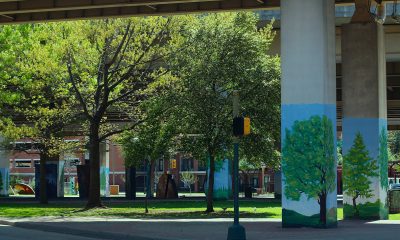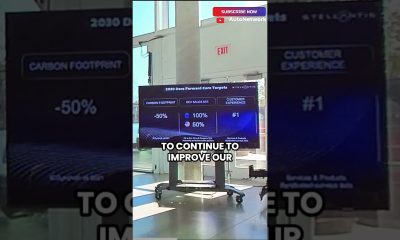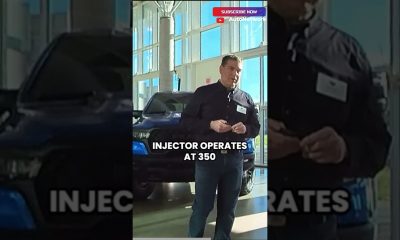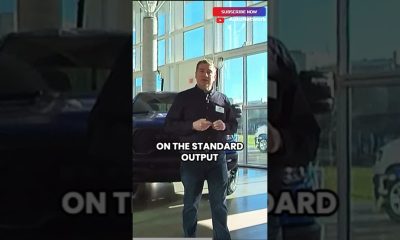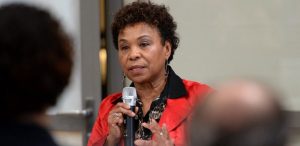Education
Minority Students Learn Tech Skills at Hidden Genius Project
African American high school students can be seen walking to 1746 Broadway Ave. in downtown Oakland headed to a summer program.
But instead of being taught remedial lessons on what was missed during the school year, these students spend their time learning technology skills and software development through a mentoring program called The Hidden Genius Project.
Aiga Zulu and Timothy Ford are second-year students in the program and say that The Hidden Genius Project helped them understand different coding languages such as HTML 5, Python, and Objective C.
Ford and Zulu now work as tutors for the incoming freshmen and sophomores. This summer, they have been contracted to build a website for the Kapor Center for Social Impact, aimed at reaching minority teens about technology opportunities.
“It’s definitely been a rewarding experience to learn programming and coding languages,” said Zulu, a 16-year-old junior at Berkeley High School. “I’m looking to major in computer science or electrical engineering, so these are the type of skills I’ll need.”
This July, The Hidden Genius Project launched its second summer program for young Black men in Oakland who range in age from 14 to 17 years old and has grown from five students to 12 students from all over the East Bay.
The program is aimed at giving the students the technical skills to be successful in today’s global economy. Students learn the skills necessary to pursue a career in software engineering, user experience design and technology entrepreneurship.
The program is a start-up where classes are taught by local program developers and assisted by two interns.
After a lengthy interview process, 12 applicants were chosen for this summer’s program and each given a laptop to work on building their own mobile applications. Applicants were selected based on their desire to learn technical skills, a letter of recommendation from a teacher and backgrounds in science and technology.
“We wanted the program to help develop the students’ critical thinking, creativity, and long term planning skills while teaching them about communication,” said Jason Young, one of the founders of the project. “It seems like Black men are largely being left out of the technology industry, and I saw this program as an opportunity to help change that. Having a willingness to work and persistence are the two driving factors for success in this industry.”
Young is also the founder of Mindblown Labs, a technology startup based in Oakland that makes mobile games for teens that teach financial literacy and other skills.
The program meets Monday through Thursday, eight hours a day, in an office space that has been converted into a computer classroom. On Fridays, weekly trips are scheduled to various tech headquarters around the Bay Area. This week students will be visiting the Computer Museum at Stanford University.
“As a community, we need to generate our own wealth and become entrepreneurs,” said program developer Kurt Collins. “Blacks are underrepresented in the tech community, and we can change that by teaching them skills that will make these careers accessible.”
Together with the help of program developers Kilimanjaro Robbs and Ty Moore, Collins says they have restructured the curriculum for the project to give students a broad knowledge of coding and decided to make a two year commitment to the selected applicants beginning with the eight week summer program.
The Hidden Genius Project is more than just a summer computer camp, Robbs says. “This program helps us to create an environment that weeds out bad habits and gradually builds up leadership skills.”
Community
The Year Ahead: Assembly Speaker Rivas Discusses Priorities, Problems
Assembly Speaker Robert Rivas shared his legislative priorities and vision for the future of California during a luncheon hosted by the Public Policy Institute of California (PPIC) in downtown Sacramento.
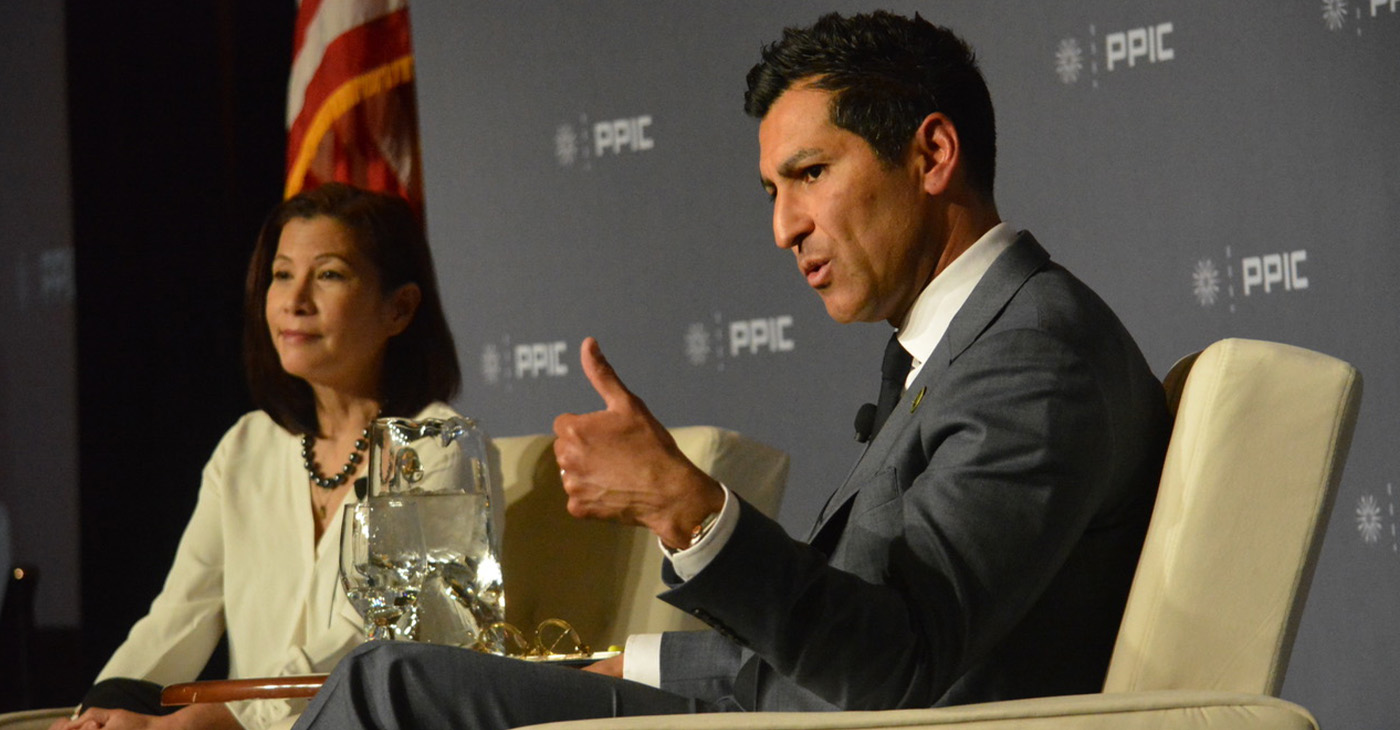
By Antonio Ray Harvey, California Black Media
Assembly Speaker Robert Rivas shared his legislative priorities and vision for the future of California during a luncheon hosted by the Public Policy Institute of California (PPIC) in downtown Sacramento.
Titled a “Conversation with Assembly Speaker Robert Rivas” for PPIC’s 2024 Speaker Series on California’s Future, the 44-year-old Democrat lawmaker from Hollister, who represents the 29th Assembly District, is the 71st speaker of the Assembly.
The discussion at the Sheraton Hotel took place about two weeks after Gov. Gavin Newsom presented his $291 Billion January budget proposal.
“These are going to be difficult times,” Rivas said of the task of balancing a budget that has been estimated separately by the Department of Finance and Legislative Analyst’s Office to have a deficit between $38 billion and $68 billion. “It’s going to underpin everything we get done this year. It’s going to impact everything.”
PPIC’s Speaker Series on California’s Future allows “leaders, lawmakers, and changemakers with diverse perspectives to participate critically, constructively, and collaboratively in public conversations,” according to PPIC.
PPIC president and Chief Executive Officer Tani Cantil-Sakauye was the moderator of the 60-minute discussion that about 200 guests attended.
Rivas said right after he was sworn in as the Assembly leader that among his top priorities are mental and medical wellness, public safety, affordable housing, homelessness, education, the state’s entry-level scientists’ wages, and climate change.
He added that his goal is to focus on both urban and rural areas across the state, including improving public services and infrastructure. He explained that wildfires, flooding, droughts, and agriculture productivity are additional concerns.
Rivas shared that legislators should have goals of “addressing critical issues” that lead to “progress, affordability, and improving day-to-day” quality of life for all residents in California.
“These issues are consistent across the state. I prioritize no region over the other,” Rivas told Cantil-Sakauye, the former chief justice of the California Supreme Court.
During the question-and-answer portion of the conversation, Michael L. Younger, the Vice President of Workforce, Strategy, and Innovation at Calbright College asked Rivas about how the state can help individuals with workforce training and achieve labor success without relying on traditional colleges and university.
“(I am) speaking to those who may not see themselves on the college track but also have value to society,” Younger asked Rivas.
In his response, Rivas said the labor force needs individuals with work training skills, especially with the rise and usage of artificial intelligence.
“The need to have that transition can’t come soon enough but at the same time we have a responsibility to train displaced workers,” Rivas said.
Carmen-Nicole Cox, director of Government Affairs for American Civil Liberties Union – California Action, asked the Speaker would he accept the “community’s invitation” to take a public health approach to addressing public safety rather than one that criminalizes, demoralizes and focuses on incarceration.
Rivas responded to Cox’s question by explaining that an impartial evaluation of public safety should be made initially before providing a resolution.
“Our approach to addressing public safety is to, first, listen, to be fair throughout our process and to find solutions. Does that include addressing public health? Absolutely,” he said.
Community
Report: Black Enrollment at Calif. Colleges and Universities Remains Low and Flat
A report the non-partisan Legislative Analyst’s Office (LAO) released last week revealed that Black student enrollment at California’s institutions of higher learning has remained relatively low and flat. Over the last two decades, for example, the study found that, compared to all other ethnic groups, total Black student enrollment at the University of California (UC) has increased by a miniscule one percentage point.

By California Black Media
A report the non-partisan Legislative Analyst’s Office (LAO) released last week revealed that Black student enrollment at California’s institutions of higher learning has remained relatively low and flat.
Over the last two decades, for example, the study found that, compared to all other ethnic groups, total Black student enrollment at the University of California (UC) has increased by a miniscule one percentage point.
During that period, Black young adults from 18 to 24 years old accounted for between 7% and 8% of the state’s total population but the number enrolled at UC remained in a disproportionately low range, between 4% and 5%.
White student enrollment at UC decreased the most over that time period from 42% in 2000 to 23% in 2021.
Latino student enrollment at UC increased from 14% to 31% and Asian American and Pacific Islander (AAPI) student enrollment remained relatively constant from 39% to 40%. But the AAPI total percentage of AAPI students attending UC remained at almost two times higher than the state’s total population of college-aged AAPI students, which moved from 13% to 15% over that period.
Titled “Student Access,” the report focuses on pathways and barriers to enrollment in higher ed, examines admissions policy, categorizes enrollment by academic specialization, and provides demographic information on students attending California’s private universities and public university systems: California Community Colleges (CCC), California State University (CSU) and the University of California (UC).
“The series has two main objectives,” the report’s introduction reads.
“The first is to help legislators, staff, and the general public track many of the key changes that higher education has undergone over the past few decades,” it continues. “The second is to help legislators and staff leverage their better understanding of the past to aid them in better navigating the future.”
According to the LAO, the report highlights priorities it recommends members of the Legislature to consider in their decision-making around the budget or higher education policy.
Berkeley
UC Berkeley Creates Its First Black History Tour
The self-guided Black history tour at UC Berkeley begins at Memorial Stadium, where student Walter Gordon was a star of the football team more than 100 years ago. It then weaves through campus, making stops at 13 more locations, each highlighting an important person or landmark related to Black history.
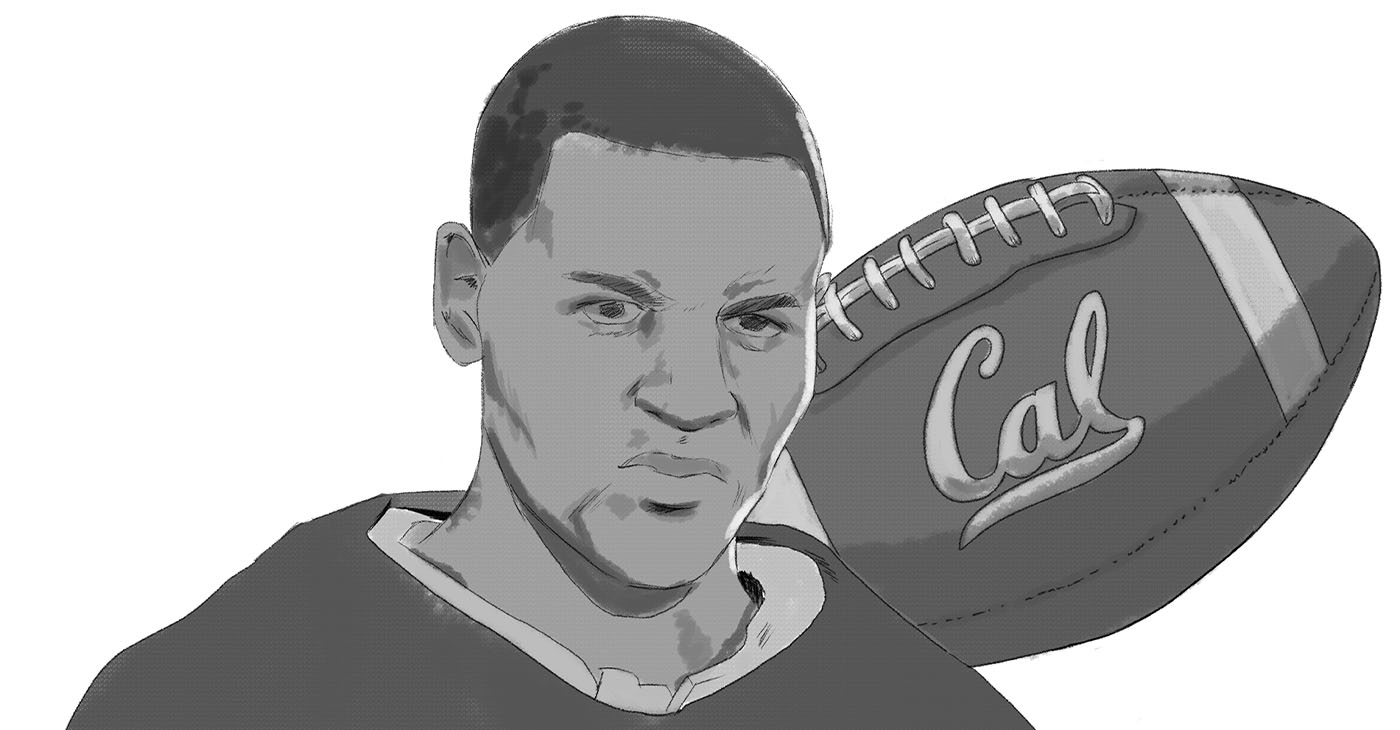
By UC Berkeley News
The self-guided Black history tour at UC Berkeley begins at Memorial Stadium, where student Walter Gordon was a star of the football team more than 100 years ago. It then weaves through campus, making stops at 13 more locations, each highlighting an important person or landmark related to Black history.
There’s Ida Louise Jackson Graduate House, named in honor of the first African American woman to teach in Oakland public schools. Next is Barbara Christian Hall, named for the first Black woman to be granted tenure at Berkeley. Other stops include Wheeler Hall and Sproul Plaza, where Black visionaries, like James Baldwin and Martin Luther King Jr., gave famous speeches.
“Just knowing this history, walking around campus and knowing it, you really feel like you belong,” said student Daniella Lake, who’s on the Black Lives at Cal team that created the tour. “Black people have been here for the past 100 years, and if they were doing all these amazing things then, I can surely do it now.”
You can find the self-guided Black history tour on Black Lives at Cal’s website. And soon, on the site, you’ll also be able to sign up for upcoming in-person walking tours.
Read a portion of the transcript of Berkeley Voices episode, “Take the first Black history tour at UC Berkeley”
Anne Brice: This is Berkeley Voices. I’m Anne Brice.
The self-guided Black history tour at UC Berkeley begins at Memorial Stadium, where student Walter Gordon was a star of the football team more than 100 years ago.
Daniella Lake: Walter Gordon, especially, is one of my favorites because he was the first all-American football athlete in the history of the University of California.
Anne Brice: Daniella Lake is a fourth-year Berkeley student in media studies. As an audio producer of the tour, she voiced many of its stops.
Daniella Lake: He was also the city of Berkeley’s first Black policeman. And, like I mentioned, the first Black student to graduate from the law school and then a federal judge and then the governor of the Virgin Islands.
And he just did it all and was so multitalented. And I just love that so much because it also shows that you can have multiple interests and you can succeed at different things. So I just love, love hearing his story.
Anne Brice: The Black history tour was created by Black Lives at Cal, an African Thriving Initiative that publicizes, celebrates and defends the legacy of Black people on Berkeley’s campus. The multi-year initiative is a collaboration between the African American Student Development Office and the Institute for the Study of Societal Issues.
The tour weaves through campus, making stops at 14 different locations, each highlighting an important person or landmark related to Black history.
Among the stops are Ida Louise Jackson Graduate House, Barbara Christian Hall, the Campanile, Sproul Plaza and the law school. Berkeley student Heaven Jones created original artwork for each stop.
Daniella Lake: I feel like it has helped me feel welcome on campus. I know a lot of students, especially students of color, Black students, feel a lot of imposter syndrome. And I feel like with this tour, just learning the history really helps combat that.
Because when I look at all these different parts of campus — when I look at Memorial Stadium, I see Walter Gordon and how accomplished he was and all the things he did. When I walk on Sproul Plaza, I hear MLK’s speech, and I think about how an undergraduate student suggested renaming the ASUC Student Union to the MLK Jr. Building.
So just knowing this history, walking around campus, and knowing it, you really feel like you belong. Black people have been here for the past 100 years and if they were doing all these amazing things then, I can surely do it now.
-

 Activism4 weeks ago
Activism4 weeks agoOakland Post: Week of March 20 – 26, 2024
-

 #NNPA BlackPress3 weeks ago
#NNPA BlackPress3 weeks agoMayor, City Council President React to May 31 Closing of Birmingham-Southern College
-

 #NNPA BlackPress3 weeks ago
#NNPA BlackPress3 weeks agoFrom Raids to Revelations: The Dark Turn in Sean ‘Diddy’ Combs’ Saga
-

 #NNPA BlackPress3 weeks ago
#NNPA BlackPress3 weeks agoCOMMENTARY: D.C. Crime Bill Fails to Address Root Causes of Violence and Incarceration
-

 #NNPA BlackPress3 weeks ago
#NNPA BlackPress3 weeks agoCOMMENTARY: Lady Day and The Lights!
-

 #NNPA BlackPress3 weeks ago
#NNPA BlackPress3 weeks agoBaltimore Key Bridge Catastrophe: A City’s Heartbreak and a Nation’s Alarm
-

 #NNPA BlackPress3 weeks ago
#NNPA BlackPress3 weeks agoBaltimore’s Key Bridge Struck by Ship, Collapses into Water
-

 Activism3 weeks ago
Activism3 weeks agoOakland Post: Week of March 27 – April 2, 2024

